Introduction
Vietnam lies in the Asia Pacific region which is a dear friend of India. Vietnam and India have China as a neighbour which results in commonality of strategic thinking due to complexities in dealing with the Chinese nationalistic aspirations. The United States (US) on account of the significant rise in China’s military power is rebalancing its forces in the region. It is pertinent to note that most of US imports come from this region and with regard to exports the area is the second largest destination for the US. The region has US bases in Japan and Republic of Korea as also friendly port facilities for US War Ships in Singapore, Thailand and Philippines. Agreements with Australia have seen the stationing of US Marines at the port of Darwin. Apart from this the US preaches freedom of navigation in this area against Chinese maritime claims in the East China Sea and the South China Sea. The East China Sea disputes are with Japan and the South China Sea disputes are with Vietnam, Philippines, Taiwan, Malaysia and Brunei. While China has an unsettled land border with India, what surprised India was China’s objection to drilling for oil by ONGC Videsh in oil blocks donated by Vietnam. India rightly stated her right to undertake commercial activities in international waters. This bold step by the Indian and Vietnamese Government led to China’s silence on this issue. Further it strengthened the bonds of friendship between these two countries.
Indo Vietnam Friendship
The seeds of friendship between India and Vietnam date back to 2 B.C. when Indian traders sailed across to the regions of Indo China. These exchanges witnessed the proliferation of Indian culture particularly to the regions of Central and South Vietnam. Indian influence exists today in Vietnamese folklore, art and philosophy. The Champa temples in Central and South Vietnam demonstrate the closeness between the two cultures. Dr Tridib Chakraborti an expert on International Relations traces the proximity in thought between the two countries due to their commonality in National Liberation Movements to gain independence. Further during the Second World War, the leaders of both the countries came close to each other and laid the solid foundations of mutual relations of friendship, cooperation and understanding due to their common perceptions of anti colonialism and non alignment. India supported Vietnam in her nationalist struggle against the international powers. Large rallies were held to support Vietnam in her freedom movement. The famous slogan, “Amar Nam, Tomar Nam, Vietnam, Vietnam,” (My name, your name and all our names are Vietnam) was a popular slogan in the streets of Kolkata during Vietnam’s struggle for unification.. Thus there was a common understanding between the two countries for over two millennia.
In the Cold War era India continued to have cordial relations with Vietnam. There was a convergence of strategic interests which resulted in mutual cooperation between the two countries. In June 1966, India openly called for an immediate cessation of bombings and the resolution of the conflict within the framework of Geneva accords. After the unification of Vietnam in 1975, India backed Vietnam’s Cambodia initiative and extended support against China’s offensive of 1979. This was a major step and led to India souring her relations with ASEAN. India economically assisted Vietnam and signed the Most Favoured Nation (MFN) agreement on 18 December 1982.
The dissolution of the Soviet Union in December 1991 impacted both the countries. The period that followed witnessed Vietnam becoming a part of ASEAN and India launched her Look East Policy which ushered in a new era of cooperation between India and South East Asian countries. During this period Economic relations further strengthened between India and Vietnam. The key areas included capacity building, technical assistance and information sharing to ensure the security of the vital sea lanes of communication including piracy and rescue at sea.
The China Factor
In the post Cold War period China played an active role in South East Asia. On 03 October 1990 China established diplomatic relations with Singapore. Vietnam was under the Han Chinese ruler from 111 B.C. to 938 A.D. The Chinese provided essential support to Vietnam in the war against France as also against the United States. However, prior to the unification of Vietnam, the Chinese PLA captured the Paracel islands in 1974. Further Vietnam invaded the Chinese supported Khmer Rouge Government in January 1978 overthrowing the dictatorial rulers and this hurt the Chinese. On 17 February 1979 China launched an offensive on the Northern borders of Vietnam to teach the Vietnamese a lesson. The conflict lasted up to 06 March 1979 with no major gains being made by the Chinese. It is pertinent to note that India’s External Affairs Minister Shri Atal Bihari Vajpayee was visiting China when the attack was launched and had to terminate his visit prematurely. Hereafter China started bilateral cooperation with all ASEAN countries and provided aid to Vietnam while improving trade relations.
China agreed to resolve border issues with Vietnam by peaceful means. This resulted in resolution of the land border and the maritime border in the Gulf of Tonkin. However the dispute over the Paracel and Spratly islands remained unresolved. In 1988, there were major clashes between the Chinese and Vietnamese Navies resulting in heavy casualties. Both sides thereafter established troops in parts of these islands as protective forces. In 1995 China occupied Mischeef Reef claimed by the Philippines. In May 2011 the Chinese cut the cable of a Vietnamese oil exploration ship resulting in further tension between these two countries. India has been allotted oil blocks by Vietnam in the South China Sea. China has cautioned India on the subject but India has taken a bold step in stating that commercial activity will continue in international waters.
The new Government under president Xi Jin Ping has become more assertive and moved a mobile oil rig in the South China Sea on May 2014. In the mean time Philippines took the issue to the Permanent Court of Arbitration in The Hague. On 12 July 2016 the PCA promulgated the Award. PCA considered the implications of China’s nine dash line and whether China has historic rights to resouces in the South China Sea beyond the limits of maritime zones that it is entitled in consonance with UNCLOS. The Tribunal examined the historical record to determine whether China actually had historic rights to resources in the South China Sea, prior to the entry of UNCLOS. The Tribunal considered that prior to the Convention, the waters of South China Sea, beyond the territorial limits were legally part of the high seas in which vessels from any nation could navigate and fish. Accordingly China had no exclusive rights historically in the high seas. The Tribunal concluded that the nine dash line did not give China exclusive rights in the high seas. China was perturbed with the Award and refused to comply with the PCA Ruling. India and Vietnam have both stated they respect UNCLOS and freedom of navigation in the High Seas. Observing China’s uncompromising attitude, US, India and all affected parties are observing the situation and would act if required patiently.
Issues which Merit Importance
Numerous visits have taken place by top leaders of both countries. The latest has been by our Prime Minister Narender Modi on 02 and 03 September 2016. The visit to Vietnam was the first by an Indian Prime Minister after 15 years. There were 12 Agreements signed during the visit which included Outer Space, UN Peace Keeping, avoidance of double taxation, Cyber Security, Information Technology, information on white shipping and contract for procurement of Offshore Patrol Vessels.
Further based on the strong relations which have been vindicated during the last 44 years of diplomatic relations and nine years of strategic partnership both countries agreed to elevate their current level of strategic partnership to a higher pedestal. The relationship would be upgraded to the level of Comprehensive Strategic Partnership which Vietnam currently enjoys with Russia and China. This is pertinent as it gives an official stamp to our mutual trust exhibited in our training and day to day dealings. With regards to the defence issue, there is no doubt that both countries respect the current Permanent Court of Arbitration ruling and they agree to the freedom of navigation on the high seas. To further strengthen our defence relationship Prime Minister Modi extended a $ 500 million dollar Line of Credit for purchase of defence equipment. The equipment to be procured is not known but there is a high probability it could be frigates, submarines or the BrahMos missile. Vietnam during the visit signed a contract with L&T for purchase of four Offshore Patrol Vessels. In addition Prime Minister Modi announced a grant of $ 5 million for the construction of an Army Software Park at the Tele Communications University in Nha Trang. Further to assist surveillance there will be cooperation in downloading images from Outer Space to provide real time picture of activities in Vietnam’s Area of Interest.
Economic issues formed an important aspect of the visit. Enhancing bilateral economic engagement is a strategic objective. Both countries would do their utmost to increase the bilateral trade to $ 15 billion by 2020. This would need immense efforts but can be achieved if both countries enhance their business interactions and diversify their range of commercial activities. Further there must be increased two way investment especially by private investors of both countries. Prime Minster Modi especially sought contractual facilitation of Tata’s Soc Tranh 1320 MW plant at the earliest. Both countries would do their best to enhance exploration of oil and gas in the new blocks allotted for exploration. Connectivity between both the countries needs to be optimised. There is a need for direct nonstop flights, dedicated shipping and land connectivity to be optimised. This would automatically strengthen economic relations between the two countries.
It was indeed creditable that both countries exhibited the highest degree of cooperation in regional and international forums. Prime Minister Narendra Modi was grateful to Vietnam for consistently supporting India’s candidature for a permanent seat in the reformed Security Council. It was further decided that India would support Vietnam’s candidature for non permanent seat for the term 2020-2021 and Vietnam would similarly support India’s candidature for the same in 2021-2022. Overall India and Vietnam relations moved to a higher trajectory during the visit.
Way Ahead
India and Vietnam enjoy strong strategic relations which emerged with the First Memorandum of Understanding (MoU) on Defence being signed in 1994, the formal Defence Protocol in 2000 and the Strategic Partnership in 2007. Ever since we have an annual Strategic Defence Dialogue with the Indian Defence Secretary representing India. Considering the intensity of our relations, the upgradation of these talks to the Ministerial levels would commence.
Cam Ranh Bay has been often described as one of the jewels of Vietnam. The long protective seaward peninsula, natural inner and outer harbours form what many believe to be possibly the best deep water port sea port facility in the entire world. There is also an Air Force base with excellent runways for state of the art aircraft. The usage of these facilities by the Indian Navy and Indian Air Force would help us to strengthen our strategic partnership and enable us to undertake actions to protect our assets in the South China Sea. The area is being quietly considered between the two countries.
Based on Vietnam’s requirements India could provide Dornier surveillance aircrafts, mini Unmanned Aerial Vehicles (UAVs), upgraded T-72 tanks and indigenously manufactured Artillery equipment once the same has proved trials and few of our old ships of the Indian Navy. Vietnam is currently procuring Offshore Patrol Vessels with our line of credit offered. Vietnam is impressed with our Missile development and is keen to purchase our Supersonic Cruise Missile BrahMos which could be used on land and sea. The issue merits serious consideration as there are no objections from the foreign joint developer. Vietnam is also keen that opportunity be accorded to train their scientists in missile technology and running of nuclear reactors.
Vietnam admires the professional training of our Armed Forces and looks forward to assistance in training in the following areas:-
- Conversion training for SU-30 pilots of the Peoples Vietnam Air Force by the Indian Air Force.
- Submarine crew training of the Peoples Vietnam Navy by the Indian Navy.
- Training in Counter Insurgency and Jungle Warfare with the Indian Army.
- Training in English language.
The Vietnamese President as also the General Secretary of the Communist Party and their Prime Minister were frank in strengthening defence relations with India. Vietnam would like to cooperate in the field of training as also gaining knowledge in the field of rocketry and missiles. It would be in our interest to cultivate Vietnam and cooperate in strategic aspects to dissuade China from undertaking a misadventure.
Vietnam is looking for cooperation in areas of outer space with India. They have already launched two satellites and are planning their own navigation satellites. Cooperation with India would be mutually beneficial to both countries. India is also setting up receiving stations to enable Vietnam to receive downloads from our Reconnaissance Satellites on the areas bound by the South China Sea.
Conclusion
Vietnam along with Japan forms the two pillars of India’s Act East Policy. Partnership in the strategic domain is important to counter China’s growing assertiveness. The new Government in India is accelerating measures to further strengthen the bonds of friendship. This would lead to better stability in the India Pacific region.
Published Date: 4th October 2016, Image Source: http://thediplomat.com
(Disclaimer: The views and opinions expressed in this article are those of the author and do not necessarily reflect the official policy or position of the Vivekananda International Foundation)

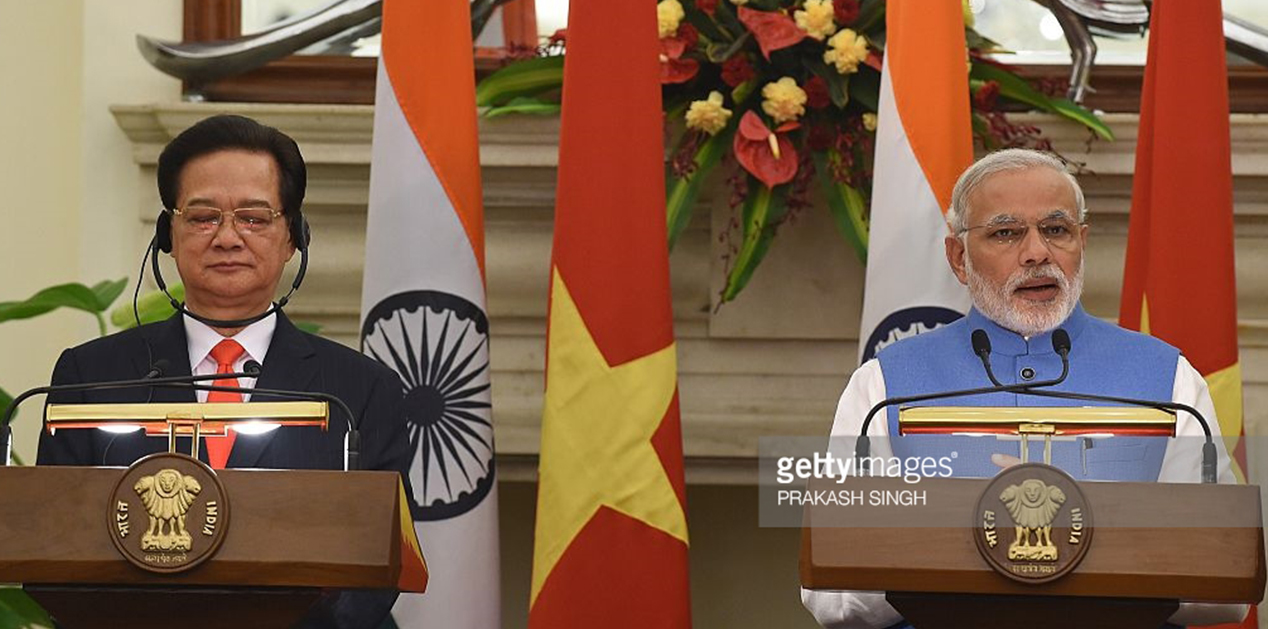

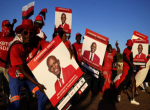
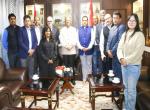


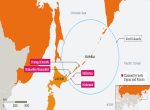
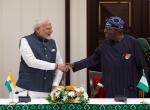


Post new comment